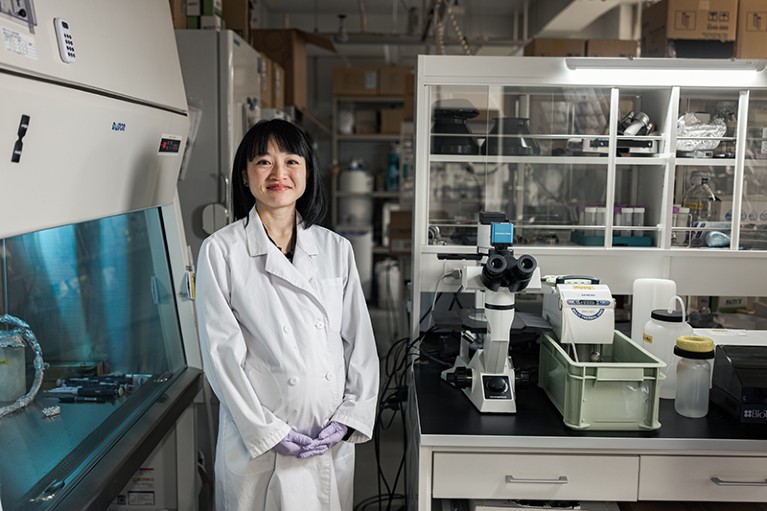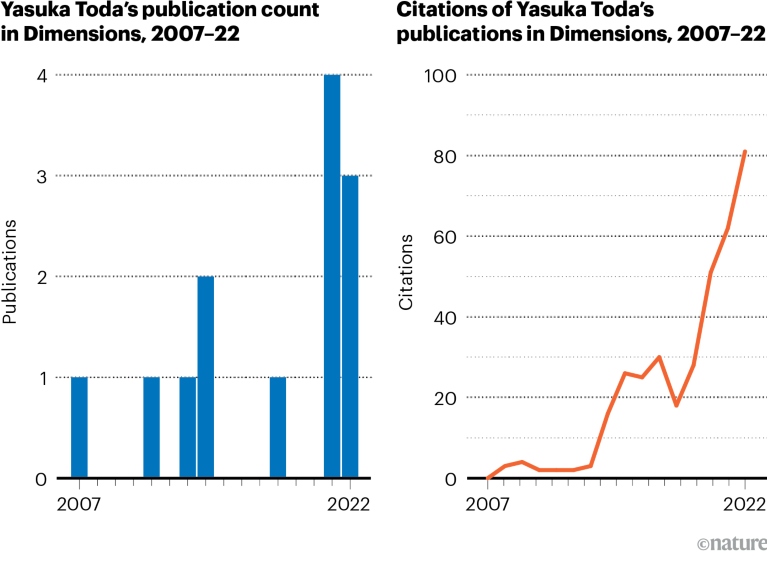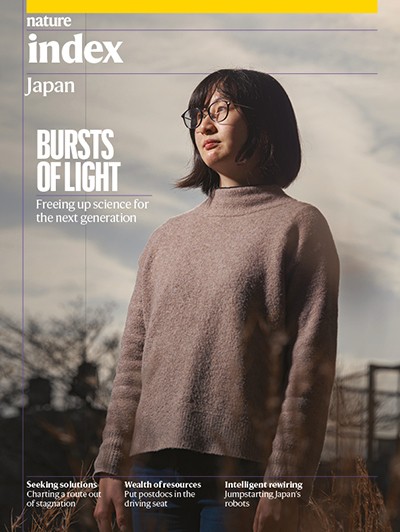
Yasuka Toda has traced the genetic history of animal taste receptors to uncover how they influence evolution.Credit: Irwin Wong for Nature
This is the fourth in a Nature Index series of profiles about emerging early-careers researchers in Japan.
Yasuka Toda is Japan’s Brilliant Female Researcher of 2022, an annual accolade bestowed by the Japan Science and Technology Agency (JST). Toda, a molecular biologist at Tokyo’s Meiji University, was awarded the ¥1-million (US$7,560) prize in recognition of her work tracing the evolution of taste receptors in birds and primates.
Toda says her research combines two passions: food science and animals (she initially trained and qualified as a vet). In particular, she is fascinated by the concept of taste. “It’s something that is very familiar to us, something we can sense directly.”
For centuries, scientists have recognized four basic tastes: sweet, sour, salty and bitter. A fifth intensely savoury taste known as umami, found in foods such as mushrooms or mature cheese, was discovered in 1909 (although it was only accepted as a basic taste by the wider scientific community in the early 2000s).
It is this fifth taste — which means ‘savoury’ or ‘delicious’ in Japanese — that Toda began exploring more than a decade ago, while working at Kikkoman in Noda, a major soy sauce manufacturer.
The popular Asian condiment contains large amounts of glutamic acid, which gives umami its unique flavour profile. “We wanted to identify how human umami taste receptors can detect glutamate,” explains Toda, who spent ten years as a researcher at Kikkoman.
During that time, the firm sponsored her PhD studies in agriculture at the University of Tokyo. Toda and her university colleagues developed a method for measuring the response of taste receptors1 and described the molecular mechanisms involved in humans and mice2. The technique for measuring receptor response was a luminescence-based assay comprising jellyfish-derived photoproteins that emit varying quantities of blue light when the receptor is activated. Toda describes the array as her proudest accomplishment so far, and it proved crucial to her later studies. “We revealed many phenomena using the new assay,” she says.
It allowed Toda to unravel the evolutionary story of how humans came to be capable of sensing glutamate. Palaeontological studies indicate that our primate ancestors were small. They ate mainly insects, which are rich in both amino acids such as glutamate and nucleotides. “Their umami taste receptors had a high sensitivity to nucleotides, which made insects seem tasty,” she says.

Source: Dimensions
As primates became bigger over time, their diets diversified to include leaves — a puzzling transition because leaves contain plenty of bitter compounds and glutamates, but no nucleotides, so they were “probably not delicious”, says Toda.
But when she and her collaborators analysed the responses of taste receptors in primates from various lineages including gorillas, orangutans and howler monkeys, they discovered that larger primates were more sensitive to glutamate compared with their smaller counterparts3.
This indicates their umami taste receptors gradually evolved to detect glutamate in leaves, allowing larger primates to overcome the bitterness and transition to a diet that included plants, she explains.
The repurposing of such taste receptors for evolutionary benefits isn’t limited to primates. Hummingbirds, like all birds, lack a sweet taste receptor, yet their primary diet comprises of sweet nectar. In 2014, Toda and colleagues published a paper4 detailing the potential reason for this: hummingbirds’ umami receptors have evolved over time to be able to detect sugar.
The researchers then wondered if a similar modification had happened in songbirds — the largest group of birds in the world today. In 2021, they reported that the answer seemed to be yes5.
This sensory shift had far-reaching impacts on their subsequent evolution, says Toda. By broadening their food sources, songbirds are able to successfully live in different environmental conditions. Today, more than 4,000 species are found across the world, accounting for roughly half of all birds.
Next, Toda wants to turn her attention to invertebrates and figure out when they lost their ability to detect umami, and why this happened. Her latest award from the JST “was a surprise and a great honour”, serving to spur her on in a country where fewer than 17% of researchers are women. “I hope model cases like me can help inspire a new generation of female scientists,” she says.


 Is Japan’s research decline turning a corner?
Is Japan’s research decline turning a corner?
 How Japanese science is trying to reassert its research strength
How Japanese science is trying to reassert its research strength
 Japan’s leading international partnerships
Japan’s leading international partnerships
 Freeing up Japan’s PhD potential
Freeing up Japan’s PhD potential
 Japan’s rising research stars: Mariko Kimura
Japan’s rising research stars: Mariko Kimura
 Japan’s rising research stars: Yuuki Wada
Japan’s rising research stars: Yuuki Wada
 Japan’s rising research stars: Tatsuya Kubota
Japan’s rising research stars: Tatsuya Kubota
 Japan’s rising research stars: Ken-ichi Otake
Japan’s rising research stars: Ken-ichi Otake
 Will Japan’s new ¥10-trillion university fund lift research performance?
Will Japan’s new ¥10-trillion university fund lift research performance?
 Shoring up Japan’s research performance
Shoring up Japan’s research performance
 How Japan’s disciplinary strengths are shifting focus
How Japan’s disciplinary strengths are shifting focus
 Japanese robotics lags as AI captures global attention
Japanese robotics lags as AI captures global attention





